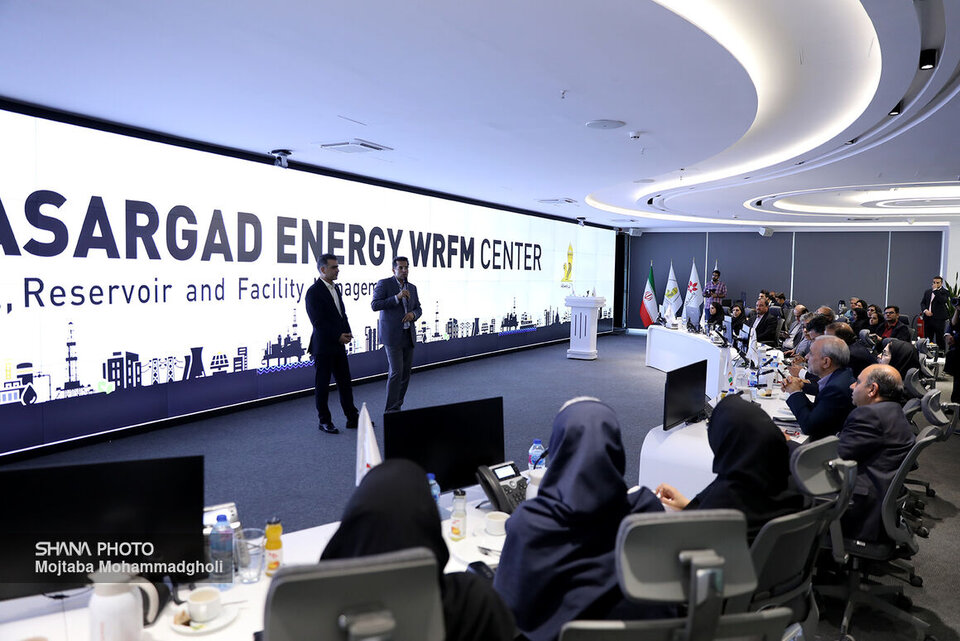In an era where fast, accurate access to specialized information is key to effective decision-making and competitiveness in strategic industries, PEDC has taken a major step forward in adopting cutting-edge technology. For the first time in Iran, the company has implemented AI in its localized platform for integrated well, reservoir, and surface facility management, which became operational in late December 2024. It is now being used in production and drilling operations. Additionally, the company has introduced the oil industry’s first upstream AI assistant (UIA), powered by LLMs and trained on data from reputable international sources, providing targeted support for industry professionals.
This globally rare project was launched to streamline searches, improve response accuracy, and reduce access time to technical expertise. It marks a significant milestone in the digital transformation of Iran’s oil industry infrastructure. As the global oil industry rapidly adopts AI, a delegation headed by Parastoo Younchi, the manger of Iranian Ministry of Oil Media Outlets, along with reporters from the Petro Energy Information network (SHANA), visited PEDC’s Well, Reservoir, and Facility Management (WRFM) center.
Saeid Dehqani, CEO of Sepehr Pasargad Oil and Gas Operating Company, a subsidiary of PEDC noted that since early 2023, the development and deployment of AI and business intelligence platforms for oil and gas field development have been a top priority for PEDC.
He stated, “Traditionally, exploration and production companies have not managed wells, reservoirs, and surface facilities in an integrated, real-time manner. In December 2024, we unveiled and launched the WRFM Pasargad platform, with full digitalization targeted within a year. Through round-the-clock efforts by our experts and collaboration with top university-based knowledge firms, AI capabilities were added to the platform for production and drilling in less than five months.”
Dehqani emphasized that importing such platforms from foreign companies is currently unfeasible, and even if purchased, their deployment would pose significant challenges.
Beyond real-time data collection, the WRFM platform facilitates advanced data analysis, enabling instant interpretation, trend visualization, and automated alerts within a unified system. This integration allows faster decision-making by providing experts with consolidated raw and interpreted data. The platform includes multiple management systems, such as real-time well production monitoring, pressure and temperature alert systems for wellhead facilities, drilling operations management, and predictive modules for production and drilling rates. It features approximately 12 business intelligence modules and three AI modules, currently deployed in the Sepehr and Jofeir oil fields.
Dehqani highlighted the platform’s impact in the Sepehr and Jofeir fields, achieving uptimes as high as 98% with only 2% production downtime. The platform has also optimized time management and cost reduction—for example, preventing production halts and increasing output worth $150 million in one well.
A major cost driver in reservoirs with asphaltine deposits is the lack of real-time pressure and temperature monitoring. Without it, production fluid flow rates can lead to asphaltine buildup, causing well shutdowns, costly repairs, or perpetual chemical injections. Companies using chemical inhibitors have faced costs of $0.70 to $1.40 per barrel. By leveraging the WRFM platform, Pasargad minimized or eliminated injections, reducing operational expenses (OPEX) in the Fahlian wells compared to other fields.
The platform enables full digital oil field integration—a milestone not yet achieved in Iran, where SCADA systems exist but lack unified data analysis for wells, reservoirs, and surface facilities. Dehqani explained, “We previously had sensors but no platform for real-time decision-making. Now, we’ve customized a solution that processes real-time drilling and downhole data, offering predictive analytics and alerts without constant operator oversight.”
Users can set parameter thresholds (e.g., pressure, temperature, weight, speed) for automated alerts. The system operates 24/7 without manual supervision.
Last year, the platform’s business intelligence module was completed, delivering three key achievements:
1. Smart production forecasting: AI predicts optimal well output in under 10 seconds, bypassing time-consuming 3D simulations. Future goals include AI diagnosing well issues and recommending solutions.
2. Drilling optimization: Focused on maximizing rate of penetration (ROP), with plans to introduce AI-driven real-time drilling issue predictions within three to four months.
3.Specialized AI assistant: Unlike general-purpose chatbots (e.g., ChatGPT), this LLM-based tool provides deep, discipline-specific knowledge for oil industry professionals, addressing the limitations of broad but shallow data sources.


Your Comment